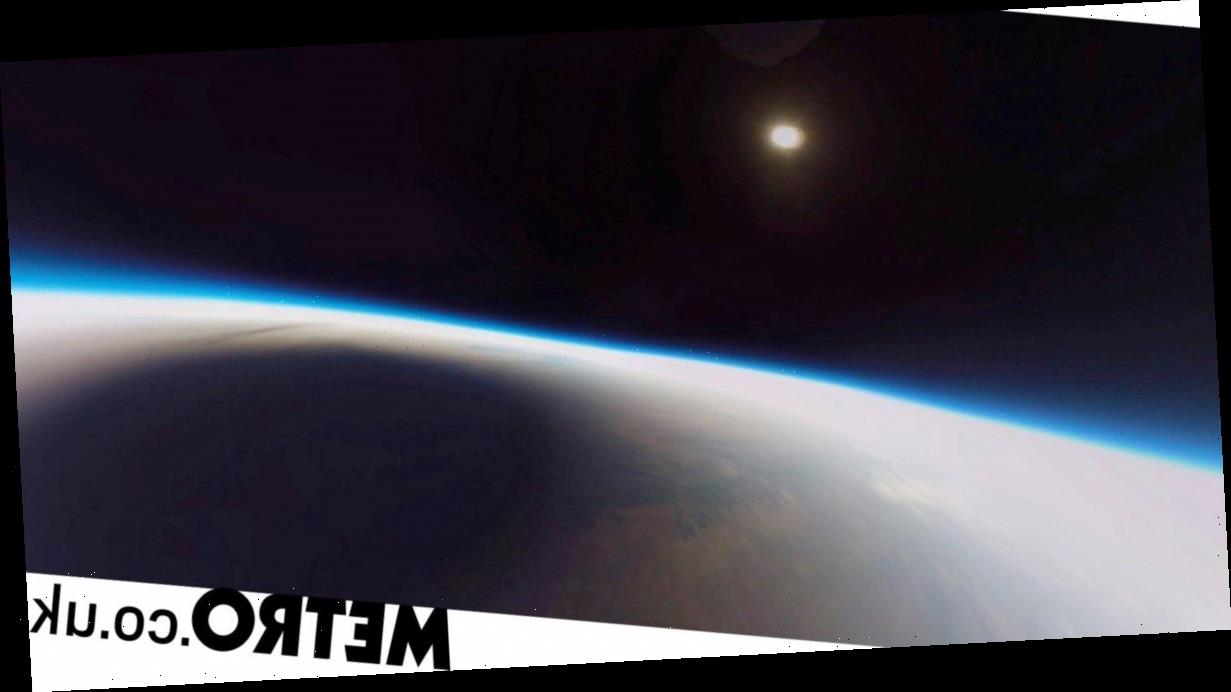Space astronomers have filmed a solar eclipse from the edge of Earth’s atmosphere using a weather balloon and a high-tech 360° camera.
Sent Into Space Limited developed a lighter-than-air balloon and a specialist camera to capture every angle of the event from August 21, 2017.
The footage begins at the launch site in Fort Laramie, Wyoming but very quickly the curvature of the earth can be identified and eventually the outer-reaches of the stratosphere.
Once the vessel reaches the optimum height of 165,000 feet after three hours, the eclipse begins to loom.
Casting a larger and larger shadow as the moon gets closer to covering the sun, a huge circle is imprinted on continental America.
When the moon fully eclipses the sun, a never-before-seen perspective is on display as camera and most of Wyoming is covered in darkness.
Head of communications, Alex Keen said: ‘We were ecstatic to capture this once-in-a-lifetime moment.
‘A total solar eclipse hadn’t been visible over the mainland US since 1979 and the path of totality crossing over so many states hadn’t happened in just under a century.
‘The public response to this video has been overwhelmingly positive, which is great to see.’
The team encountered a number obstacle to overcome, designing complex and bespoke equipment to withstand the conditions of space.
But the team learnt a lot from the recording of this historic sighting, observing that there was a larger amount of turbulence when the eclipse was in full view.
Alex continued: ‘All equipment onboard our launch vehicle, from the tracking and radio transmission equipment to the camera systems, had to be extensively customised or designed in-house from the ground up to withstand the extreme environment of Near Space, where temperatures drop below -65 degrees Celsius and atmospheric pressure is less than 0.2% of that experienced at sea level.
‘As our launch vehicle passed into the shadow of the moon, there was a great deal of turbulence, because the trace atmosphere under the moon is no longer heated by the sun’s radiation, even for a few minutes, a substantial temperature and pressure change takes place.’
Source: Read Full Article

